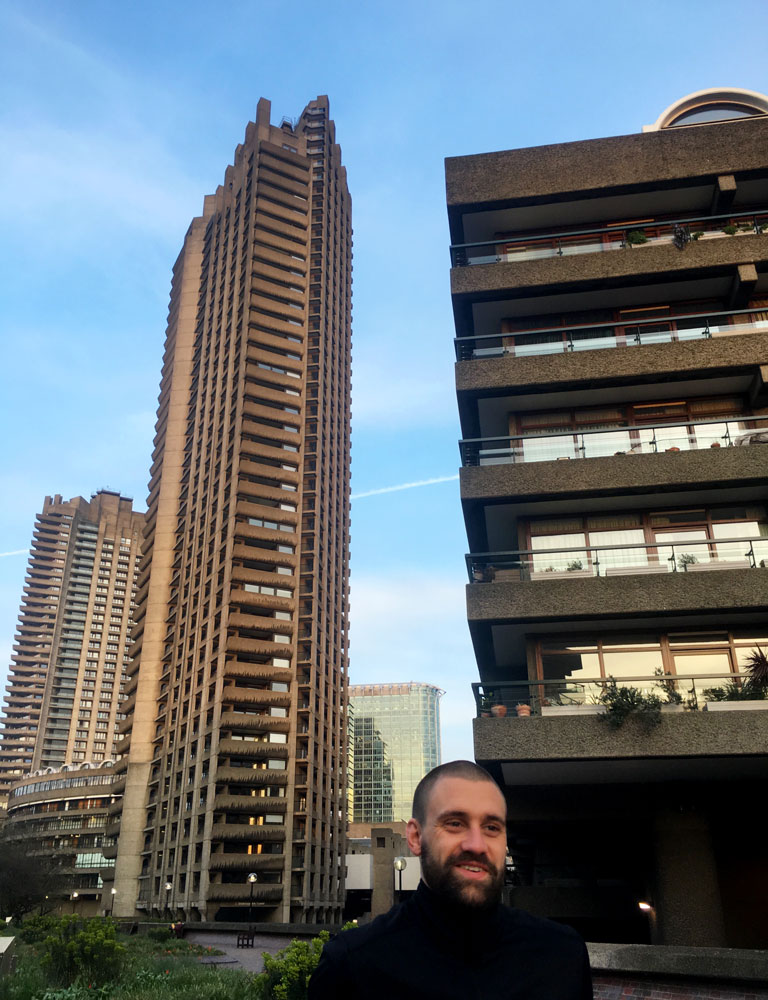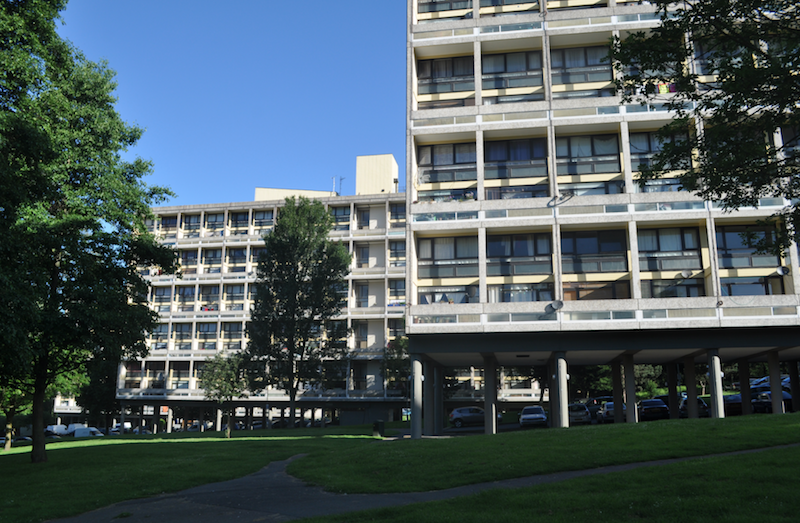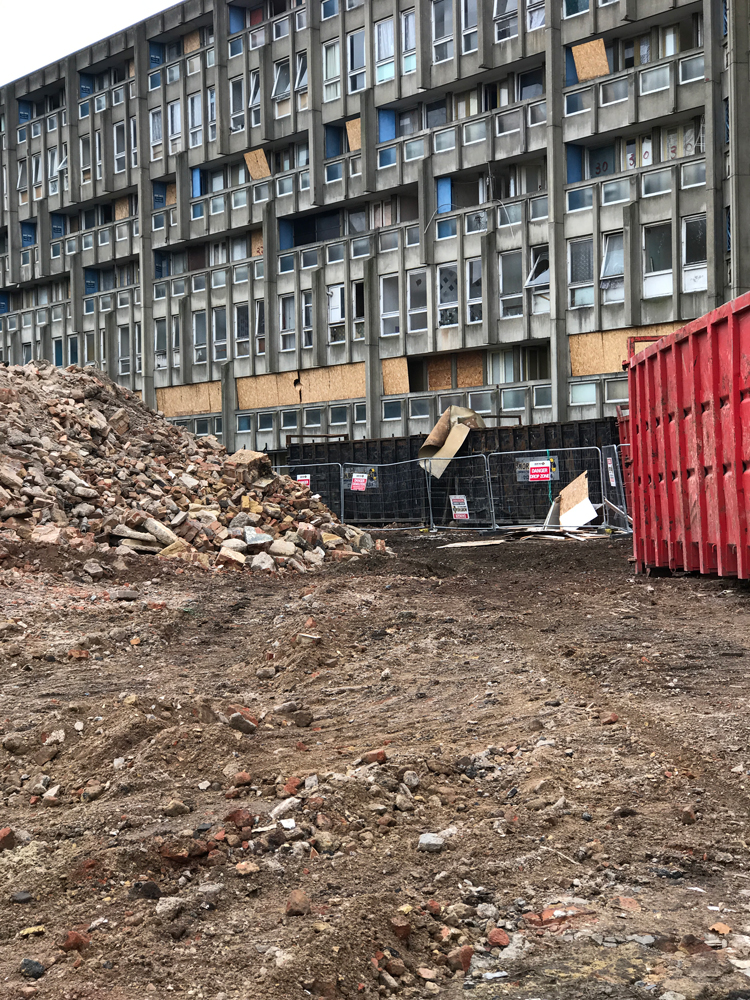Award-winning architecture and design filmmaker, Joe Gilbert, talks to GreyScape

Joe is an award-winning documentary filmmaker based in London. He specialises in films about architecture and design. His films have screened internationally at various film festivals.
Joe’s 2015 documentary ‘BARBICAN | Urban Poetry’ won best film at Screen Stockport and Thurrock Film Festival.
A year later ‘Streets in the Sky’, his first film on Robin Hood Gardens, won best film at the Creativepool Annual 2016. Here he speaks with GreyScape about his consuming passion.
How did you become a documentary maker?
I’ve had an interest in film for as long as I can remember. I got my fist digital video camera at 11 and never looked back.
I went to film school in 2010 with the aim of becoming a fiction film director. However, our first film project brief was to create a 5 minute documentary on anything we wanted. I decided to make a film about Hastings Pier. It had been closed for years and left to crumble away into the sea. 1 week into filming, the pier was burned down by arsonists. I’d inadvertently shot some of the last footage of the Victorian pier. It radically changed the type of film I was going to make.
This exercise taught me that anything can happen in documentary filmmaking. Truth is always stranger than fiction.
You’ve returned to the Barbican and Robin Hood Gardens more than once I believe. It would be fascinating to understands your thoughts about these two estates. Could you give some insights/comparisons/contrasts between the two in terms of design, living spaces and for you as a film maker.
The Barbican and Robin Hood Gardens both share a similar ideology in one regard – Radical modern housing. They offered a completely new way of looking at inner-city living. Gone were the claustrophobic terraced houses covered in smog. They were spacious for the time, complete with high ceilings and big windows. Both inward looking to large green spaces. They separated people from cars and offered much needed respite from busy city life.
However, the estates were built for completely different people. The Barbican was primarily for middle-income city workers, while Robin Hood Gardens was mainly social housing.
The Barbican always had a grand concept as a ‘city within a city’. All amenities were originally developed to be together – Pubs, hairdressers and laundrettes. As well having its own dedicated art gallery and concert hall. It’s a world class example of modern design.
Robin Hood Gardens had a humble task. It was there to offer people an affordable and comfortable place to call home. It took design cues from the Barbican and brutalism as a whole and moulded it to fit a much smaller scale and simpler idea.
It was mentioned in one of your films about Victorians hating Georgian architecture – how do you think Brutalism will fare in 50 years time when it arguably hits its 100th birthday?
I feel like we’re still years behind our European friends on understanding what Brutalism is. There’s always this idea that things were better in the good old days. In general, I don’t believe our society is as open to change as others.
Having said that, since I’ve been making films about brutalism, I’ve seen many younger people taking a real interest in this style of architecture. Just look at the amount of Instagram accounts dedicated to brutalism.
Tastes are so fickle. It can decades for buildings to be accepted by the masses. It’s always when something is gone that we realise how much we took it for granted.
Robin Hood Gardens is a particular fascination and a point of despair for all of us, Can you share some thoughts about it’s demise
Robin Hood Gardens is the perfect example of what regeneration really means. It’s heartbreaking to see a diverse community of people split up and brushed aside in favour of expensive bland glass towers to generate a quick profit for developers. The whole process is so insidious which is really why I wanted to return to the estate 3 years later and make a follow-up film. An entire block is already demolished and 2 towers have quickly risen, creeping in on what’s left of the estate. It’s something that is happening across the entirety of the capital.
Robin Hood Gardens became infamous as a ‘sink estate’. It was a scapegoat used to demonstrate the failure of social housing. I believe it was left to deliberately decline for decades as an excuse to demolish it. There was and is a total lack of appreciation for its architectural importance. Brutalism is a movement which have been and gone and this estate was a shining example it.
Tell us about our current and next project
I’ve just finished a film called ‘Golden Barbican’. It’s a real passion project to show the beauty of the estate. Each shot is 1 sunset sequence of the building. There are 20 time lapsed sunsets in total.
My next film will be a voyeuristic look into city office spaces shot at night when nobody is in them. The idea of stillness in a location associated with the exact opposite really appeals to me.
What building (current or no longer standing) that you would love / to have loved filming?
Marina City in Chicago. It’s my dream to make a film about that building. I’m planning to visit the city next year.=
Do you have a time of day that you most prefer when filming?
It depends entirely on the project but usually late afternoon and early evening. The light is the best and the city is quieter.
Favourite song
This changes everyday. I always listen to music when I’m shooting. But right now it’s Butterfly Effect by Travis Scott.
Film you’ve seen more than 3 times
Natural Born Killers. I must have seen it 20 times by now. It’s a visceral, sensory overload and a masterclass in film editing.
Must have item in your camera bag when you go out filming
My 2 prime lenses – 16mm and 50mm. I shoot almost exclusively on these. Setting limitations like this challenges me to be creative and get the best angles I can.
All Joe’s films can be seen on his video channel https://vimeo.com/user1878821. We promise, you’ll keep going back. Thanks Joe.







